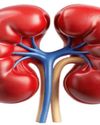Try GOLD - Free
Indoor Air Pollution in India & Its Neglected Outcomes
Scientific India
|March - April 2022
Certainly, air pollution remained most serious health Cthreat globally for decades. It has caused substantial harm to human health, nature (environment) and economy.

World Health Organization data showed exposure to air pollution cause 7 million premature deaths every year. WHO data has also been revealed that almost global population (99%) breathes air that exceeds WHO guideline air quality limits [1]. Albeit, air pollution related data and census are more frightening in India. Estimated 1-67 million deaths were attributable to air pollution in India, during 2019. The majority of these deaths were from ambient particulate matter pollution (0-98 million) and household air pollution (0-61 million) [3]. Studies also indicated that Air Quality usually more worst among the north Indian states as compare to south. Exposure to ambient particulate matter ranged from 15-8 μg/m3 in Kerala, to 217-6 μg/m3, in Delhi, 13-8 times difference; nevertheless, an average PM2.5 concentration in India is 91-7 μg/m3 still violating the national and international air quality standards [3]. Not only health but every aspect of life may suffer by air pollution and its corollary outcomes. Let's take a look on recent scientific findings on air pollution impact on India:
Factors behind to making India, world's most Polluted Country
Unfortunately, air pollution hitting most to the low and middle income countries like India, where air quality remained worst so far. India is emerging as the one of the most polluted country in the world. Despite various environmental policies and acts there is no significant sign of air quality improvement. India is one of the fastest developing country and factors like rapid industrialization, transportation, anthropogenic activities such as over construction, deforestation, uncontrolled population etc. are the most important factors, that's contributing to increase the air pollution.
This story is from the March - April 2022 edition of Scientific India.
Subscribe to Magzter GOLD to access thousands of curated premium stories, and 10,000+ magazines and newspapers.
Already a subscriber? Sign In
MORE STORIES FROM Scientific India
Scientific India
Japanese physicists were the first to measure the most tolerant entanglement state, the W state
There are many unusual things that happen in the world of quantum physics.
3 mins
September - October 2025

Scientific India
The Fifth Force: Could It Unlock the Secret of Dark Matter?
What if the universe is powered by a force we've never seen before? For centuries, science has explained nature with four fundamental forces.
3 mins
September - October 2025

Scientific India
A flu test you can chew
As flu season nears in the northern hemisphere, scientists are exploring a surprising new way to detect infection: through taste.
1 mins
September - October 2025

Scientific India
Lab-Grown Kidney Brings Artificial Organ Dream Closer to Reality
In a major leap toward bioengineered organ replacement, scientists have successfully grown human kidney 'assembloids' in the laboratory that mimic key structural and functional features of natural kidneys.
1 min
September - October 2025

Scientific India
Your pumpkin might be hiding a toxic secret
Pumpkins, squash, zucchini, and other members of the gourd family have a surprising trait: they can take up pollutants from the soil and store them in their edible parts.
1 mins
September - October 2025

Scientific India
2025 Nobel Prize in Physics Reveals Quantum Secrets in Superconducting Circuits
The 2025 Nobel Prize in Physics has been awarded to John Clarke, Michel H. Devoret, and John M. Martinis for their pioneering experiments that brought quantum mechanics from the invisible atomic world to the macroscopic scale a system large enough to hold in your hand.
1 mins
September - October 2025

Scientific India
Genomic Evidence Redefines the Evolutionary Age of Mosquitoes
A new genetic analysis has shaken up what we thought we knew about one of humanity's most notorious pests the mosquito.
1 min
September - October 2025

Scientific India
Nobel Prize in Chemistry 2025: Building Molecular Architectures with Room to Breathe
In a scientific breakthrough that bridges molecular design with planetary-scale problems, the 2025 Nobel Prize in Chemistry has been awarded to Susumu Kitagawa, Richard Robson, and Omar Yaghi.
1 mins
September - October 2025

Scientific India
Guardians of Immunity: Nobel Prize 2025 Honors Discoveries that Keep the Immune System in Check
The 2025 Nobel Prize in Physiology or Medicine has been awarded to Mary E. Brunkow, Fred Ramsdell, and Shimon Sakaguchi for their groundbreaking discoveries in the field of peripheral immune tolerance a crucial mechanism that prevents the body's immune system from turning against itself.
1 mins
September - October 2025

Scientific India
'Is cold nuclear fusion feasible?
In early May 1989, two chemists from the University of Utah, Pons and Fleischmann, arrived in Washington, U.S.A. The aim is to present their findings to members of the US Congress.
3 mins
September - October 2025
Translate
Change font size
